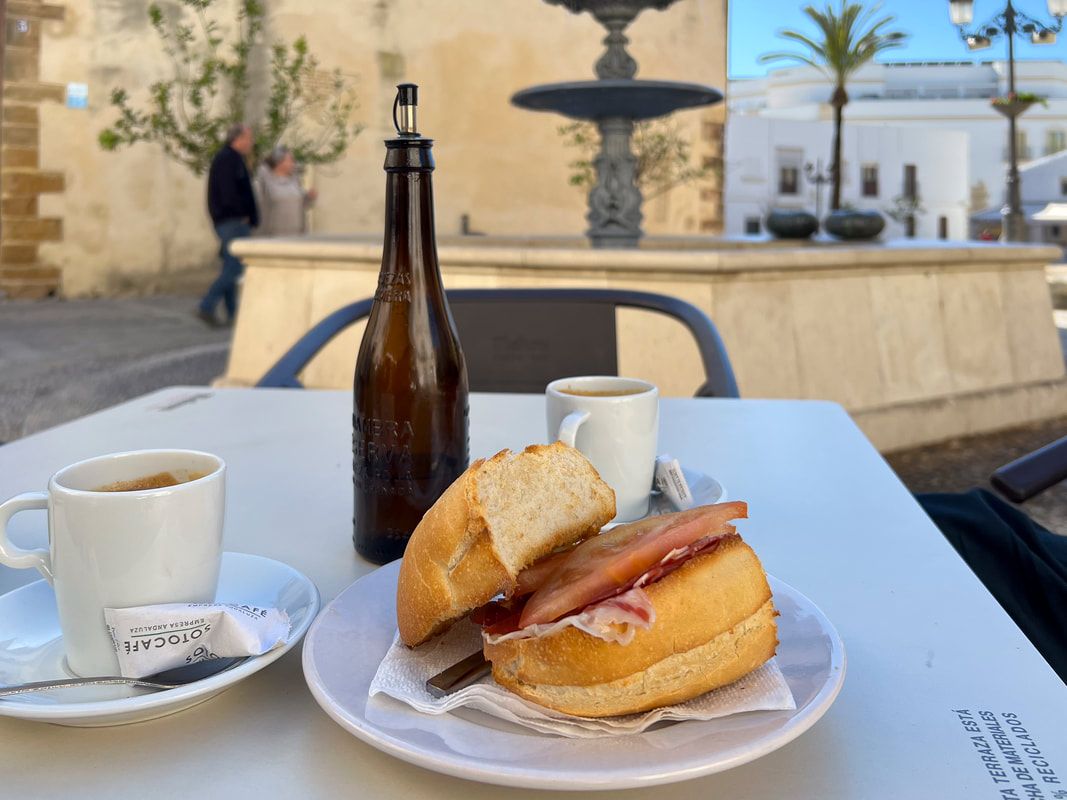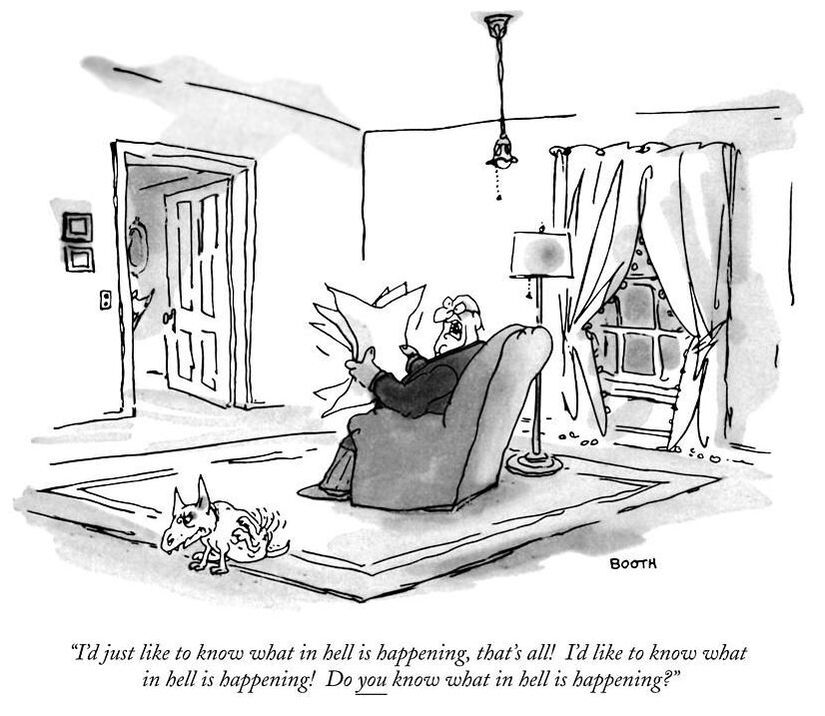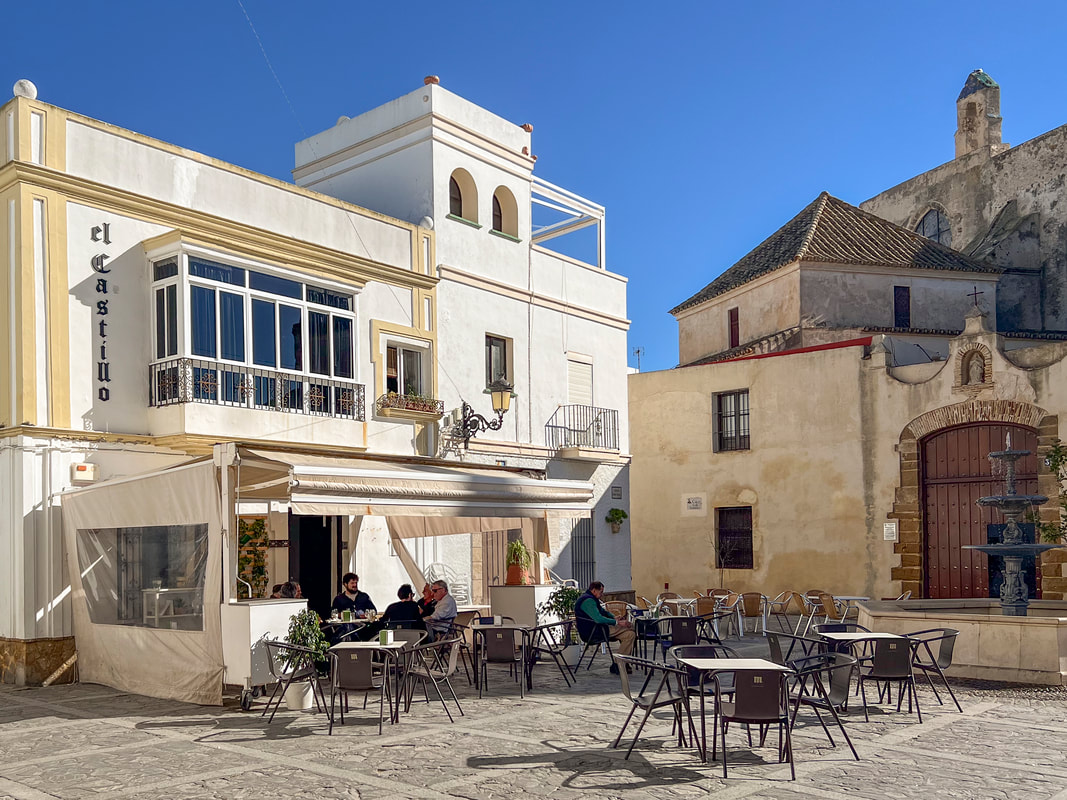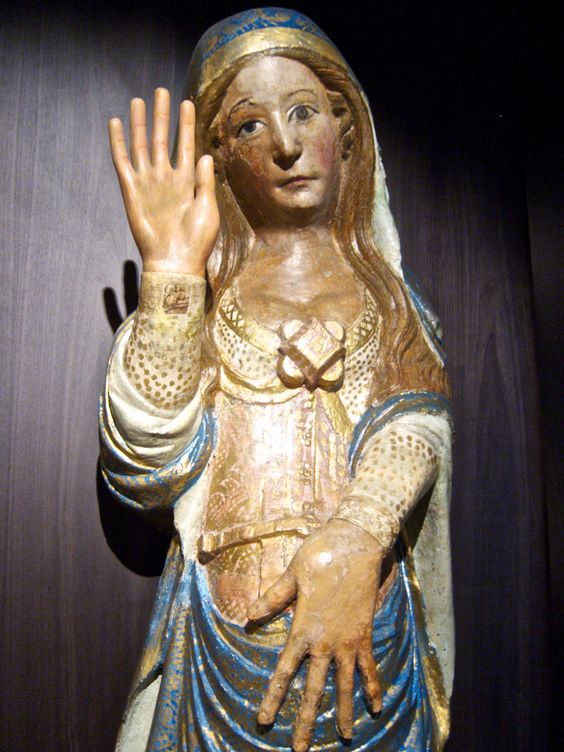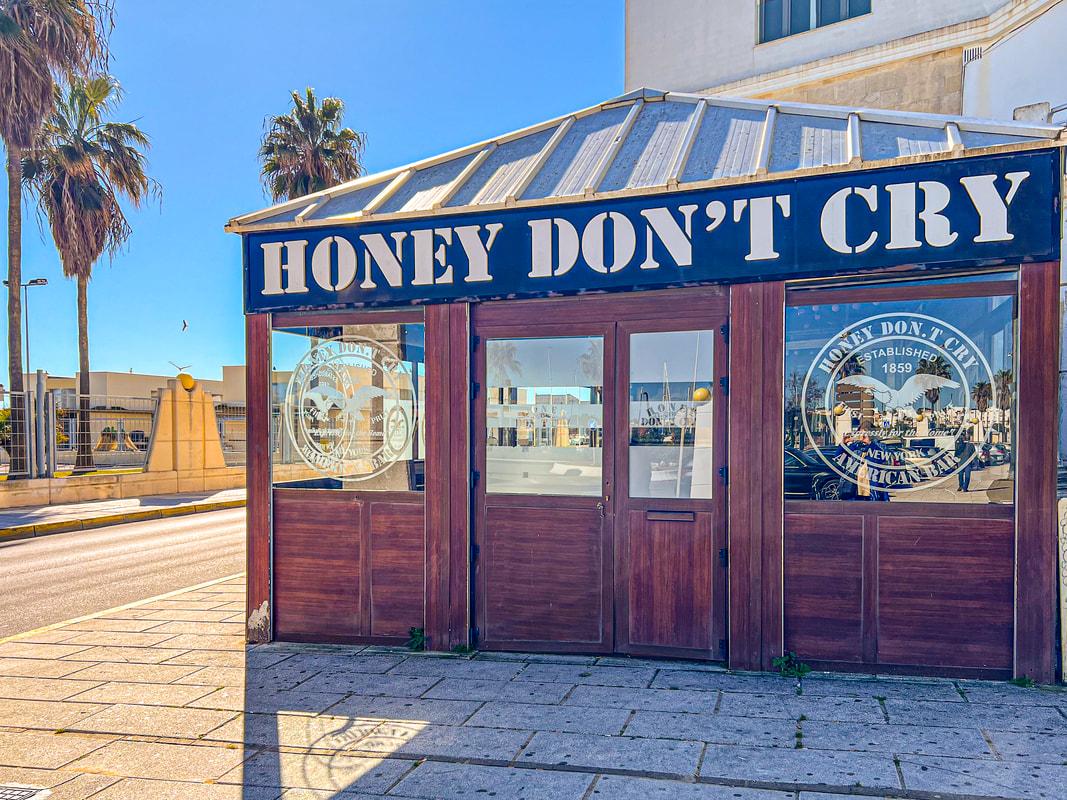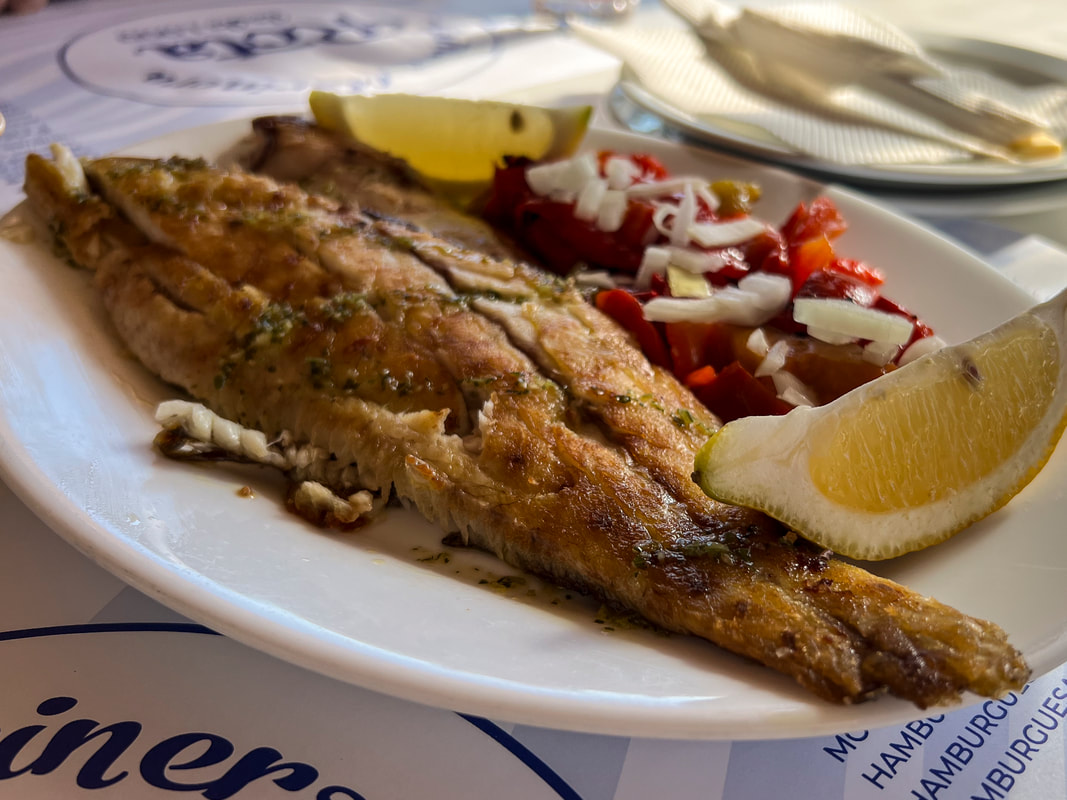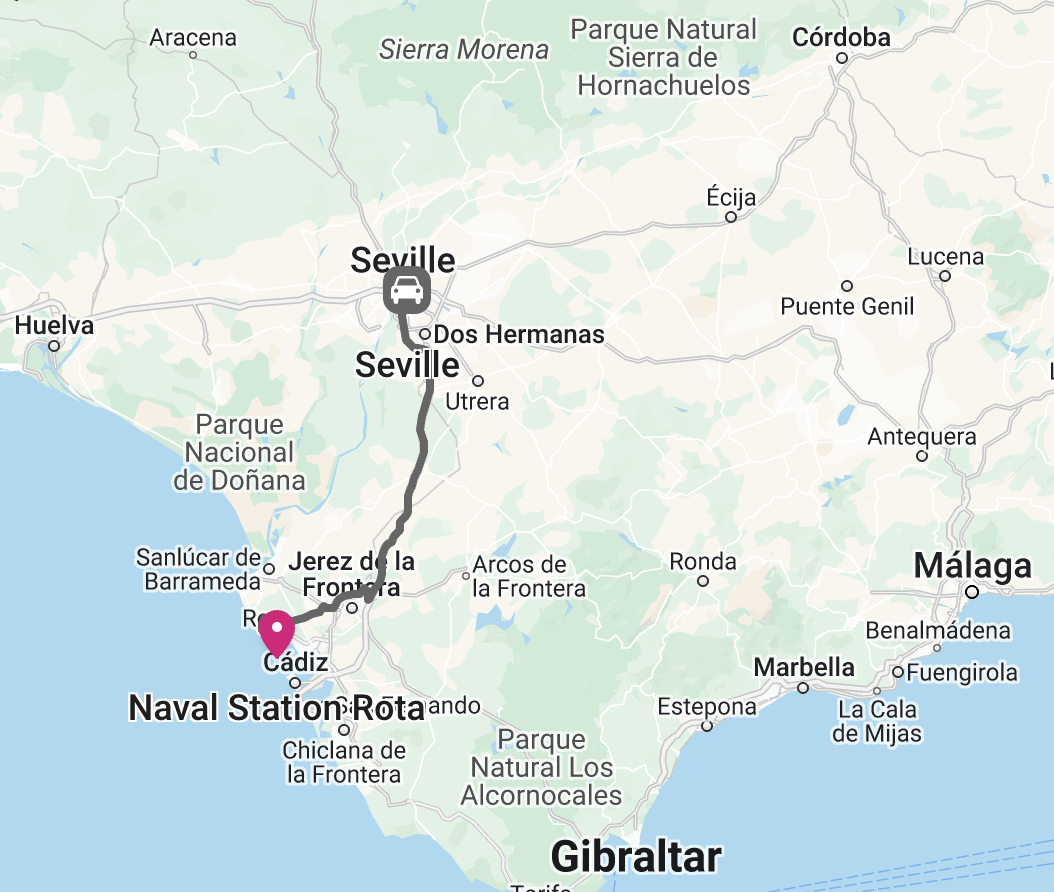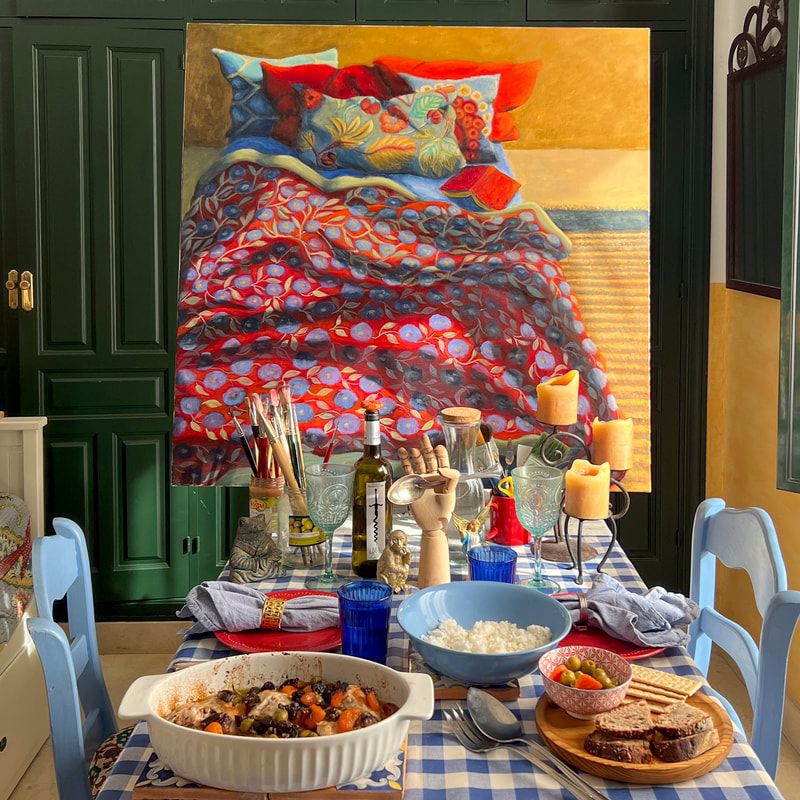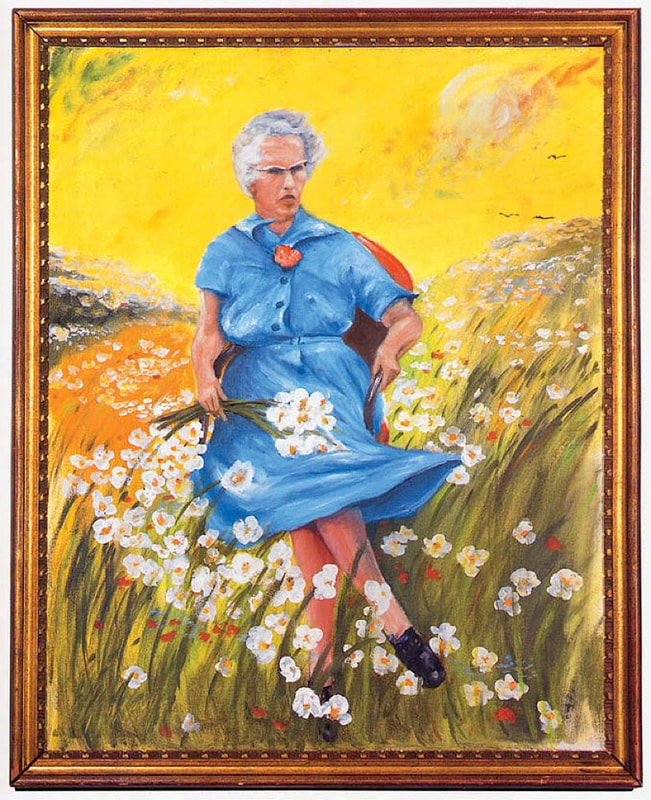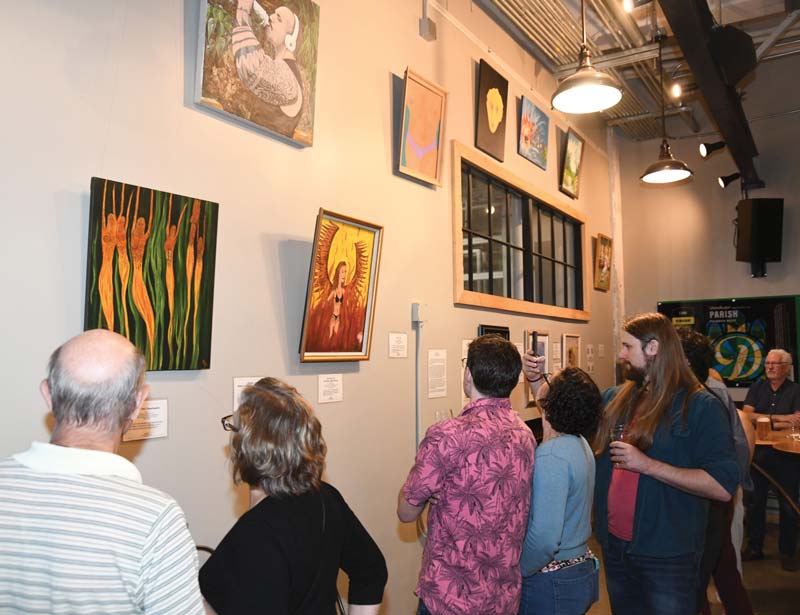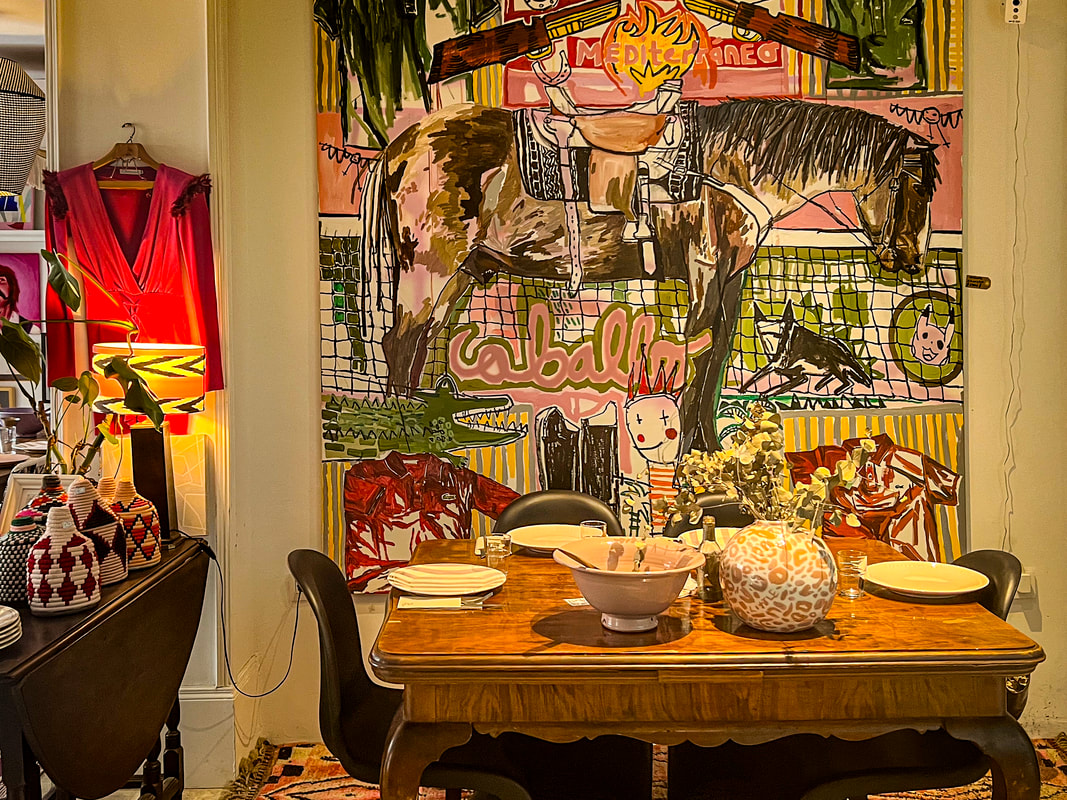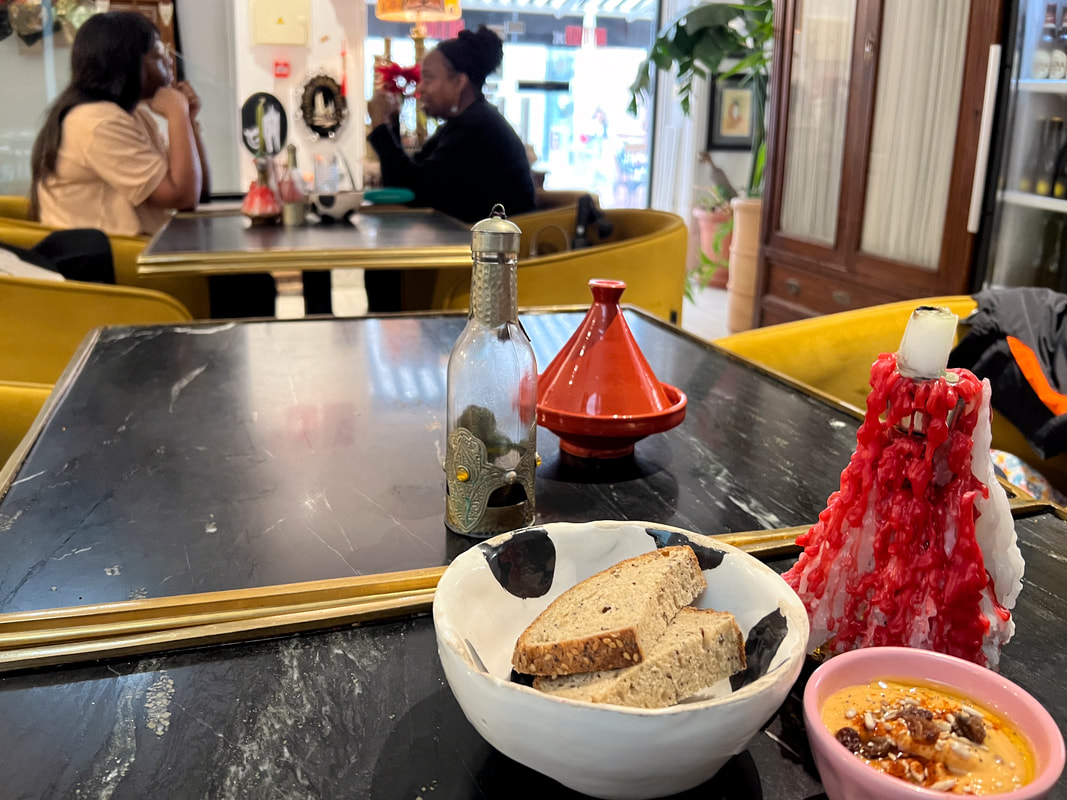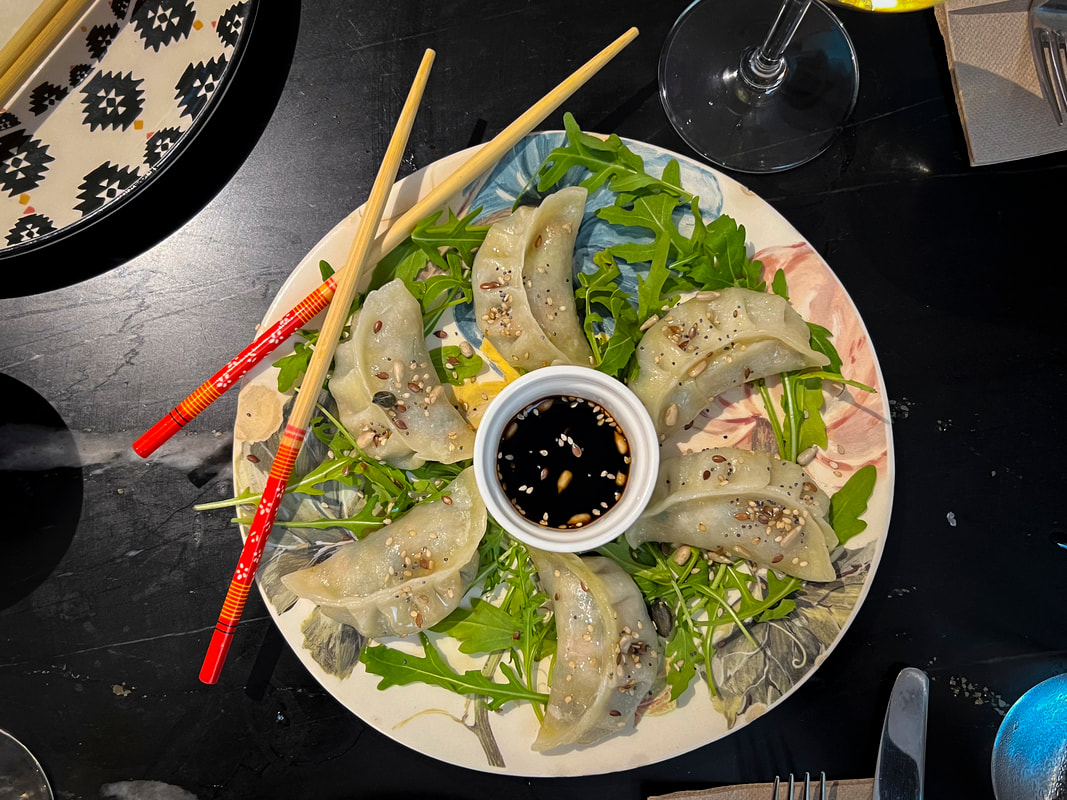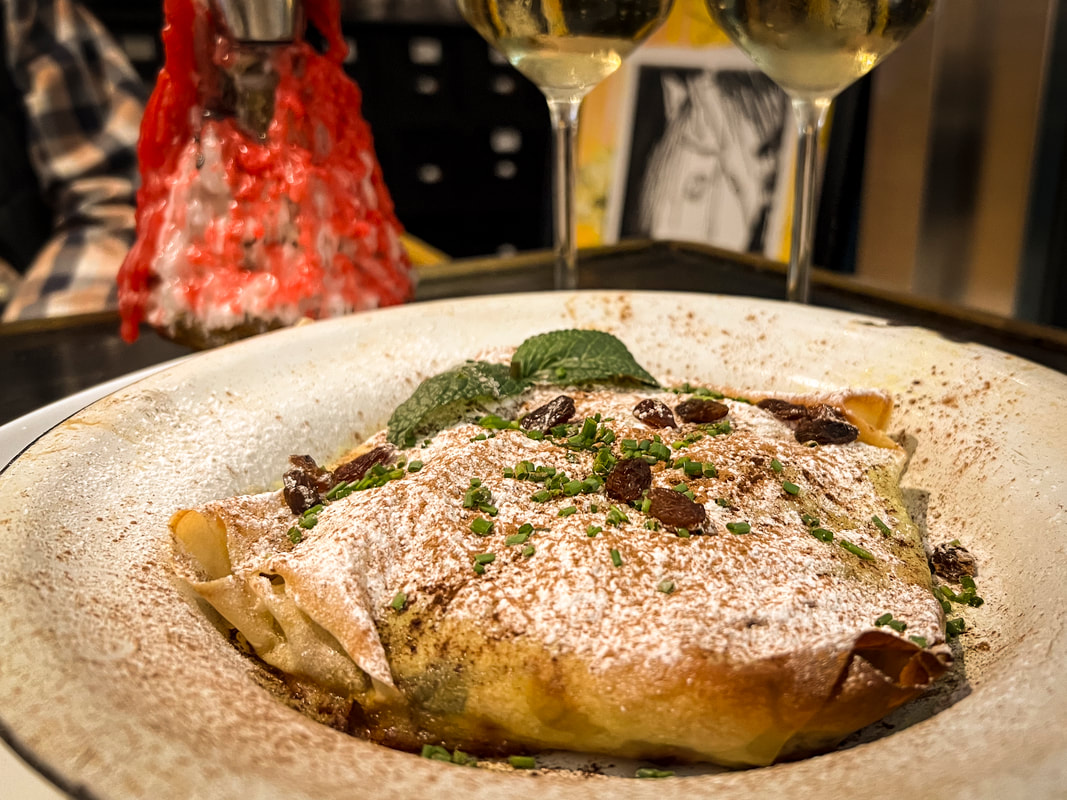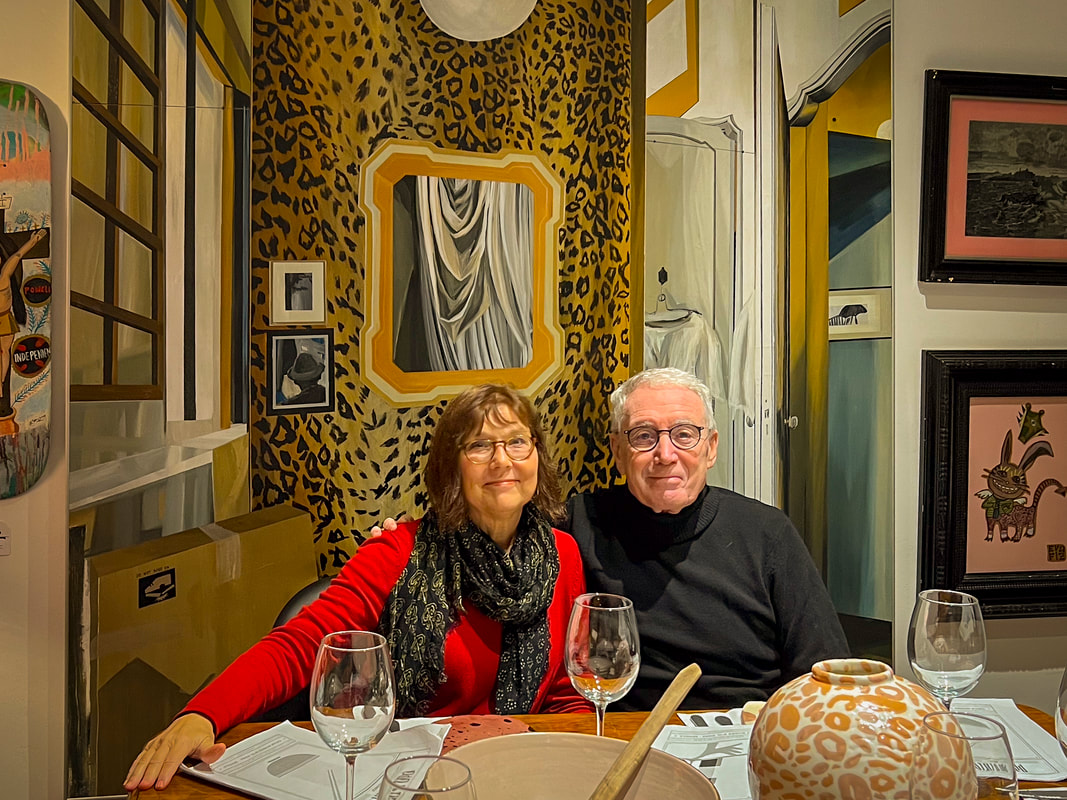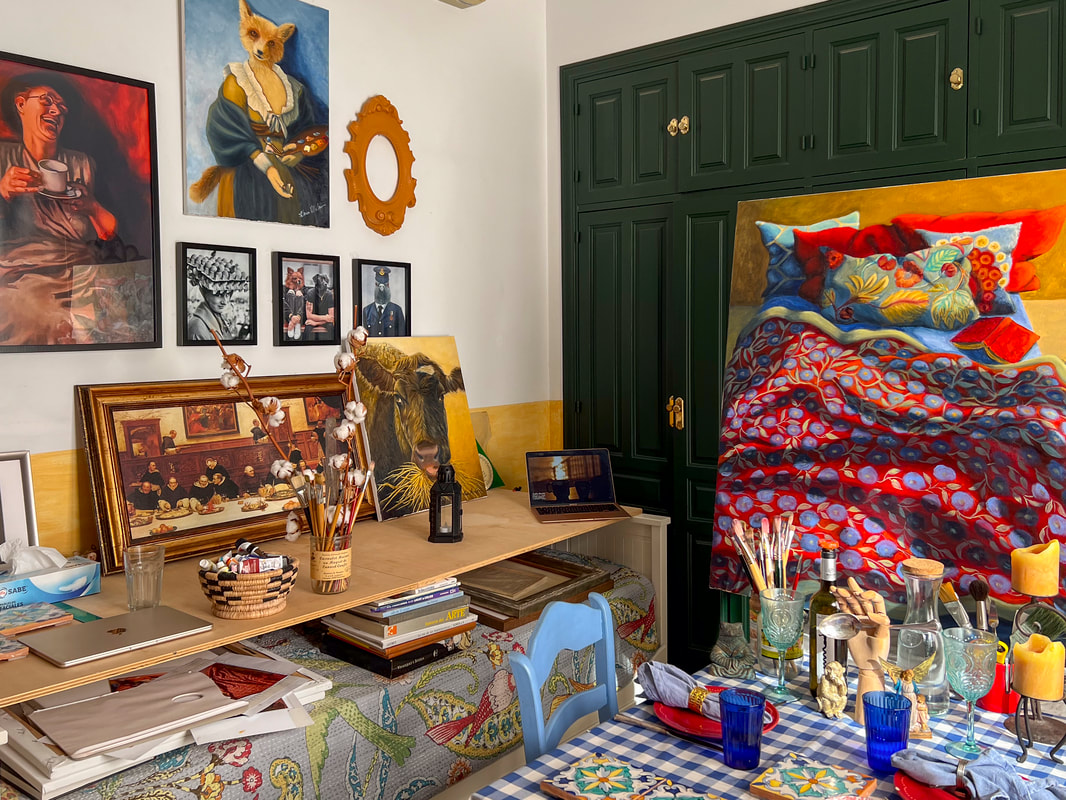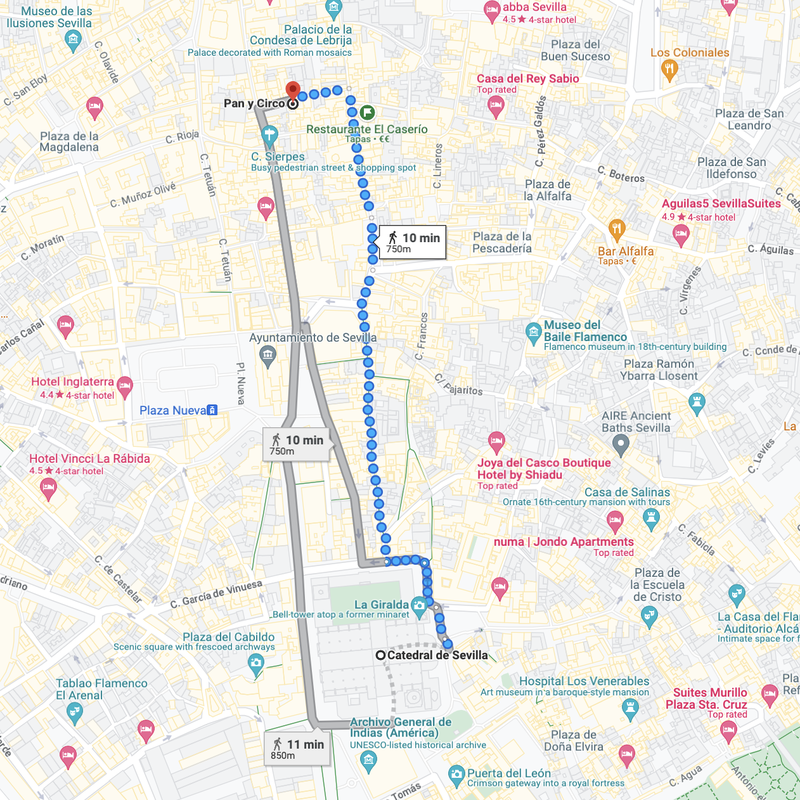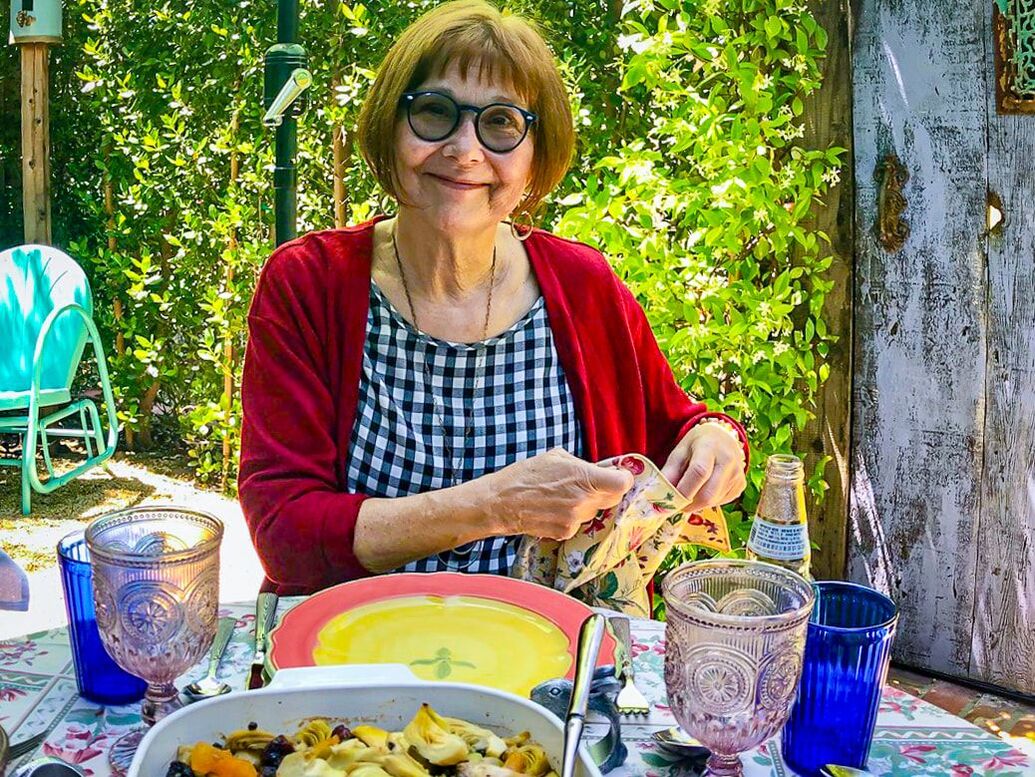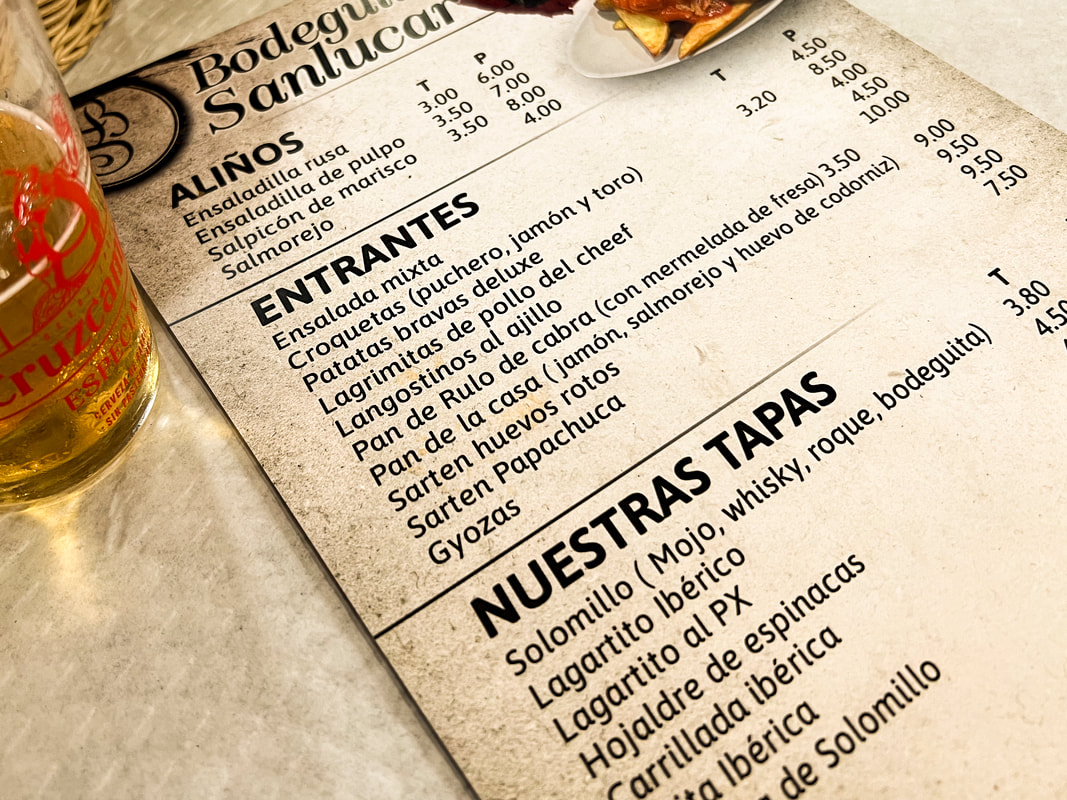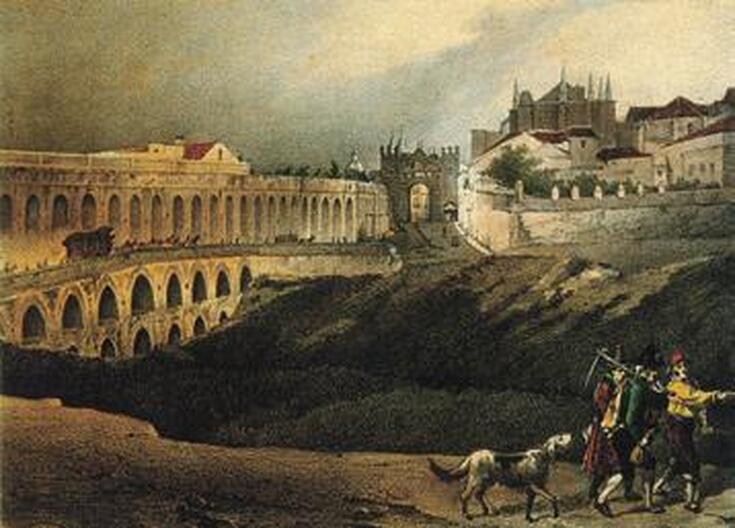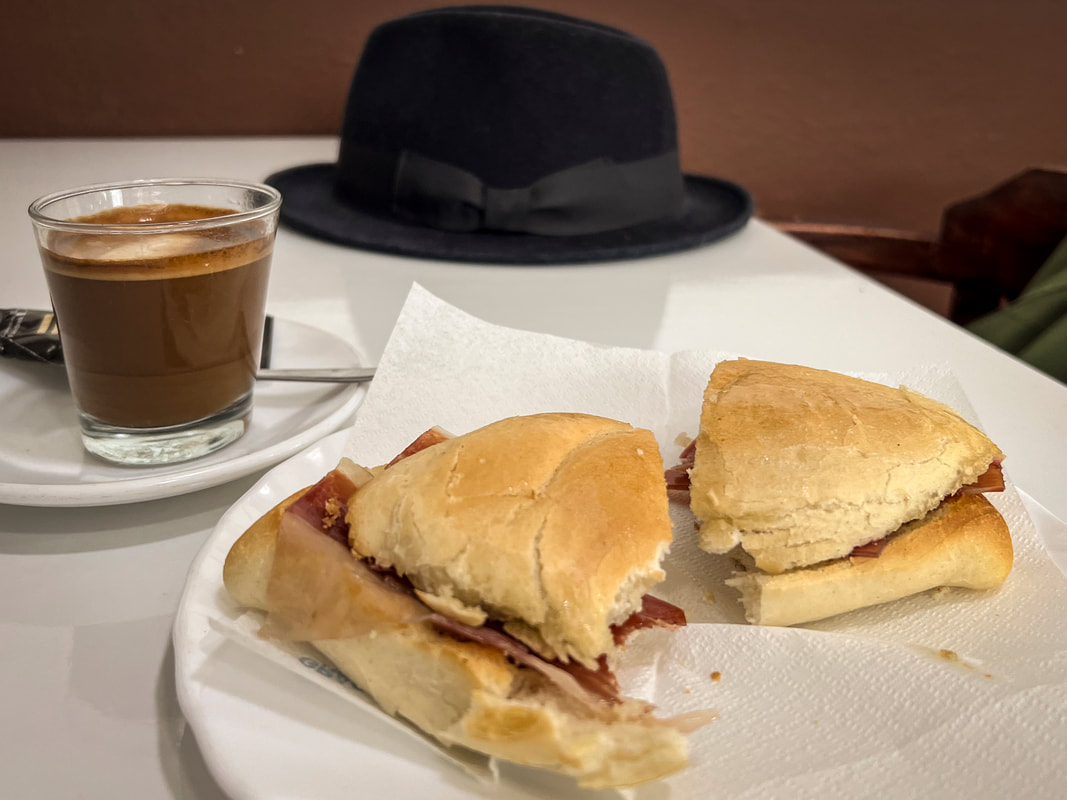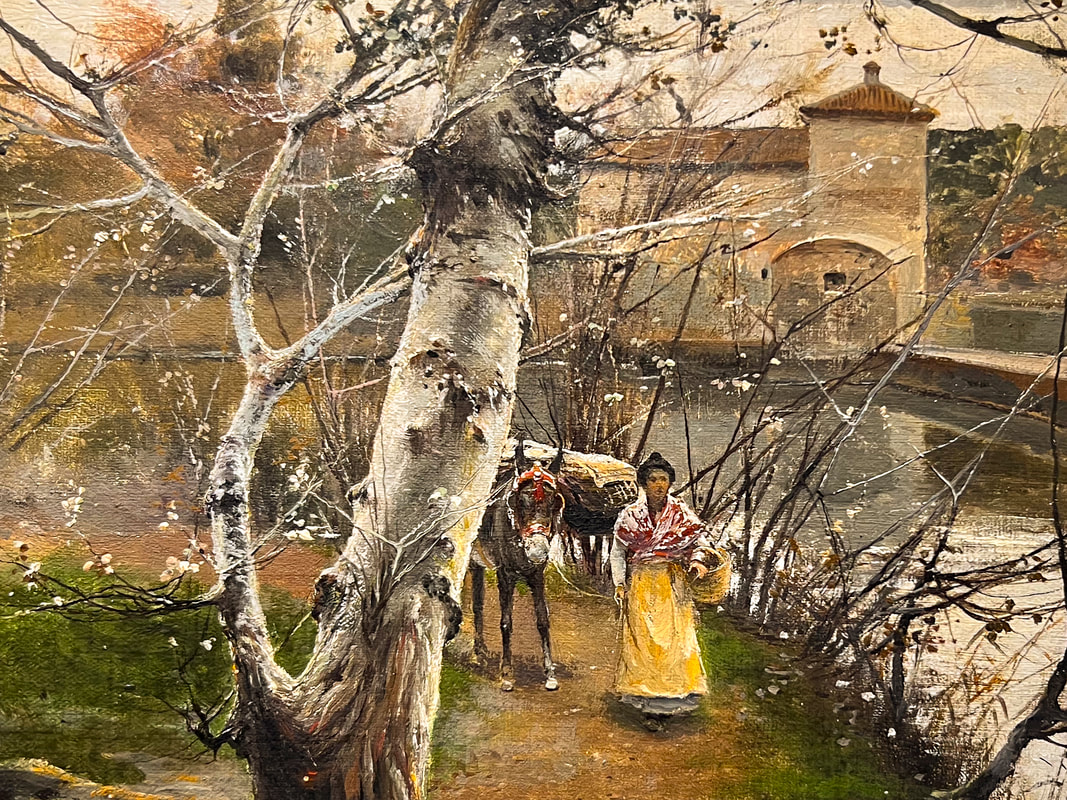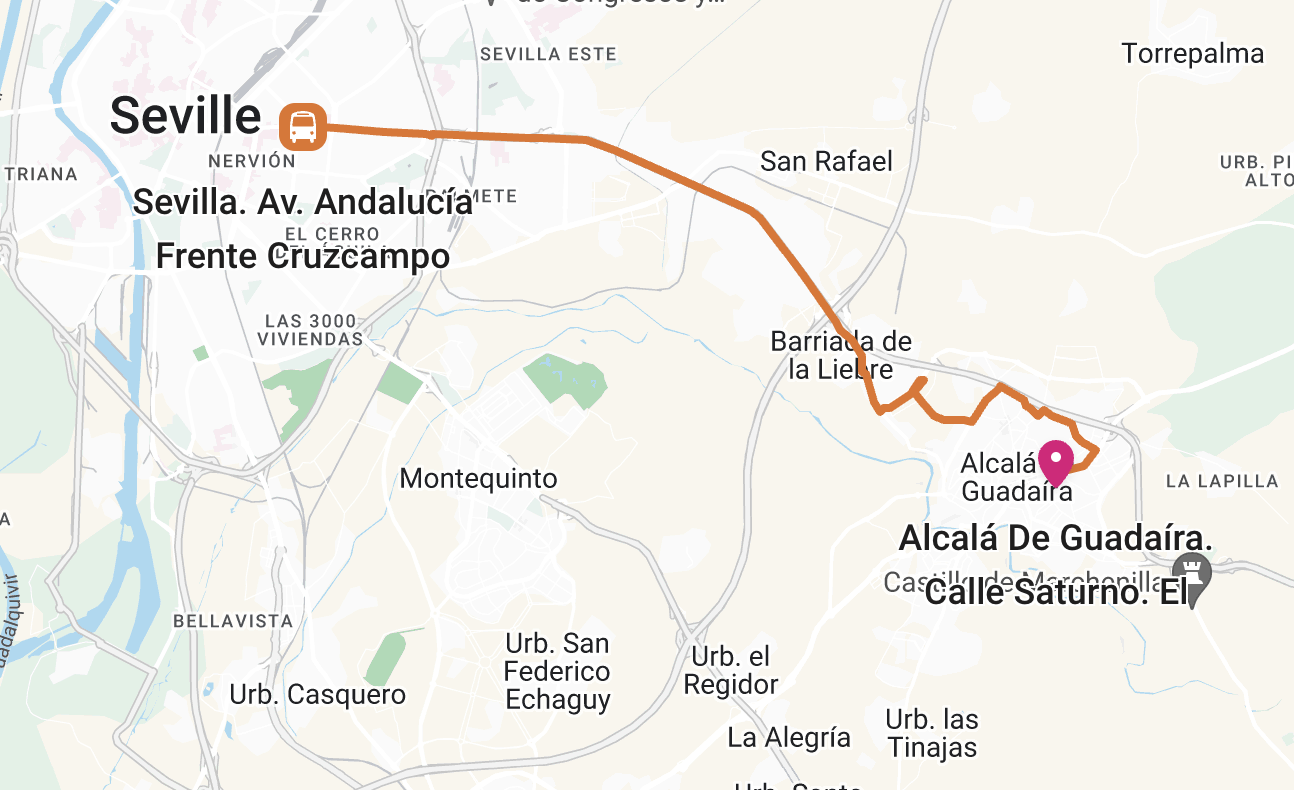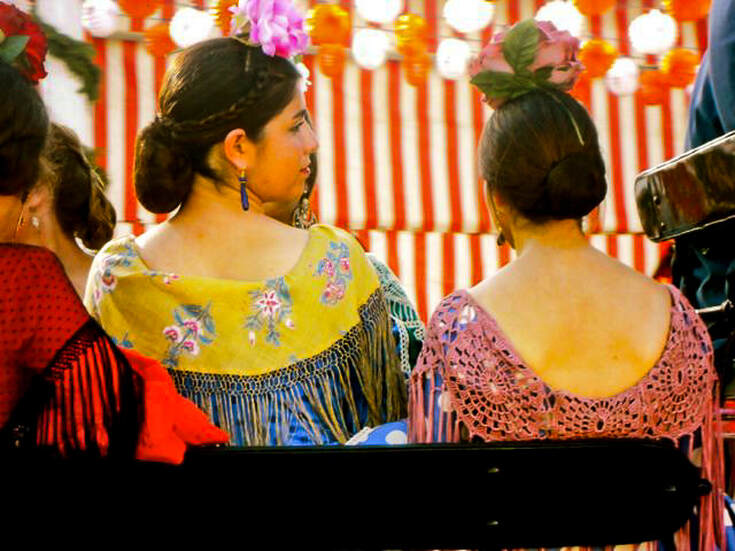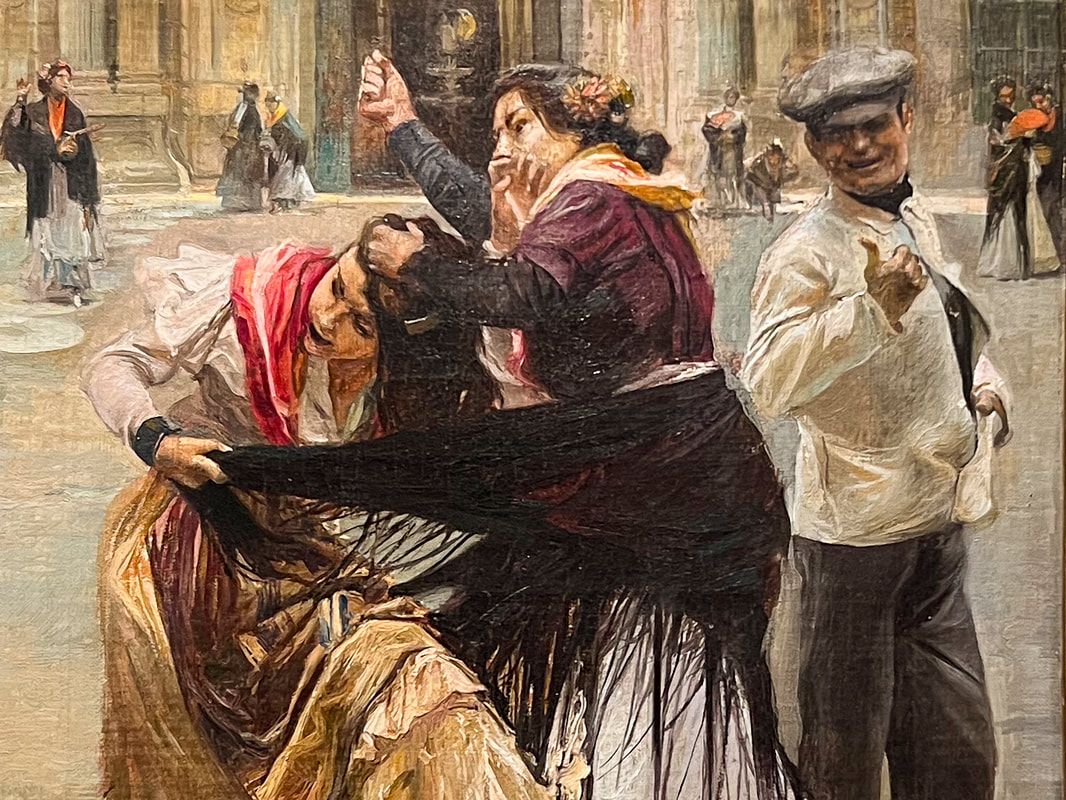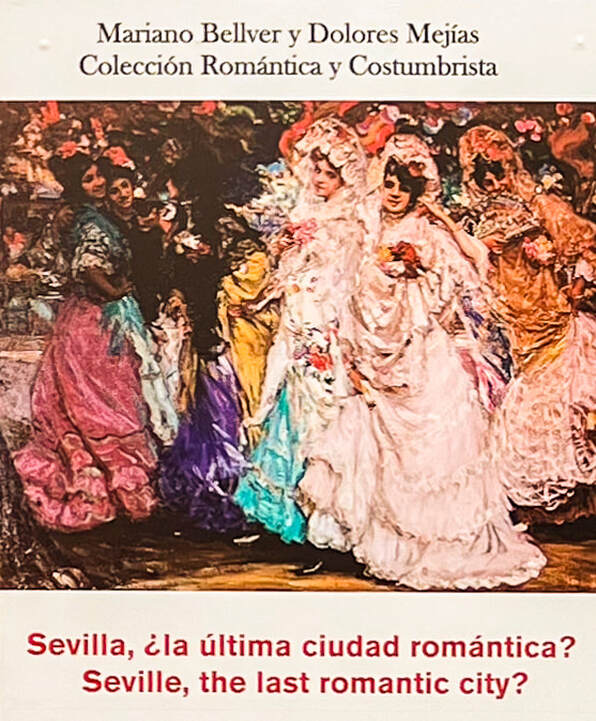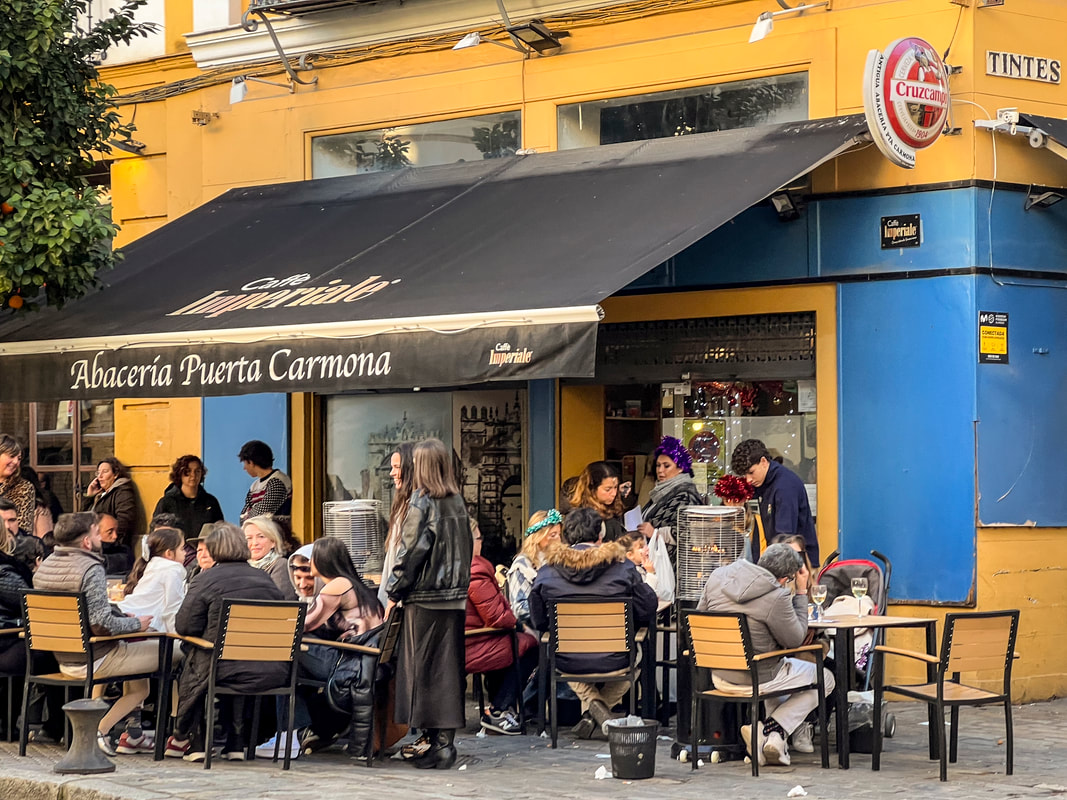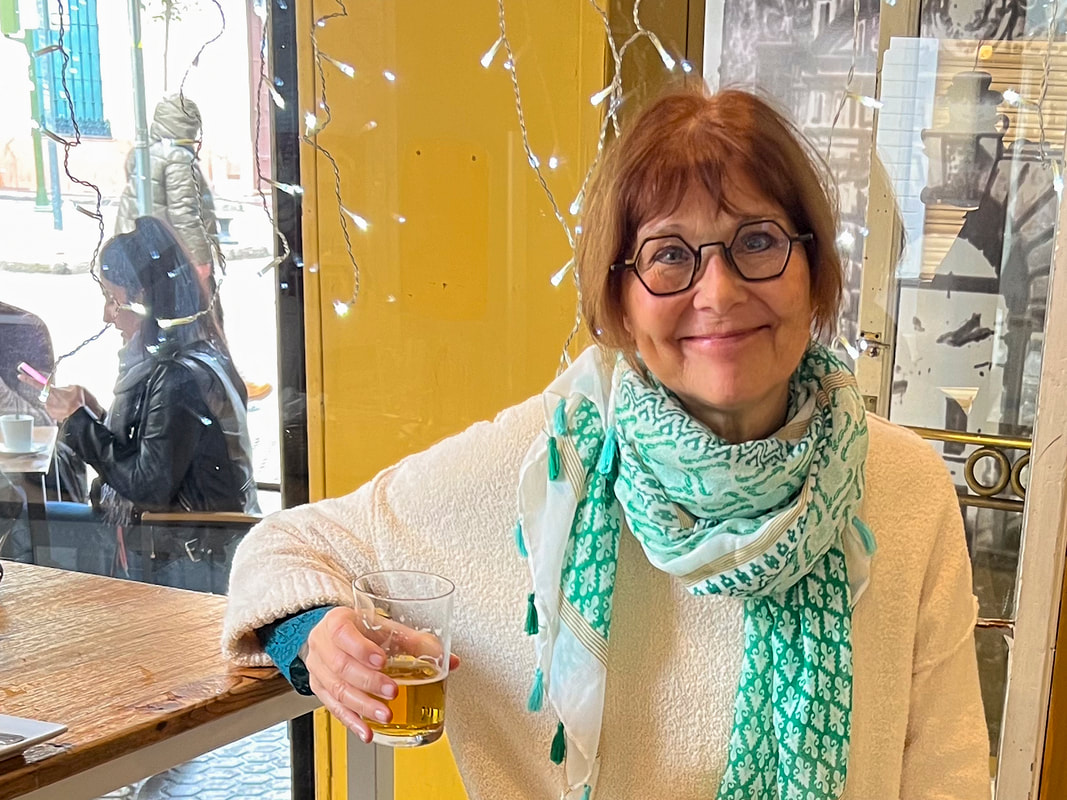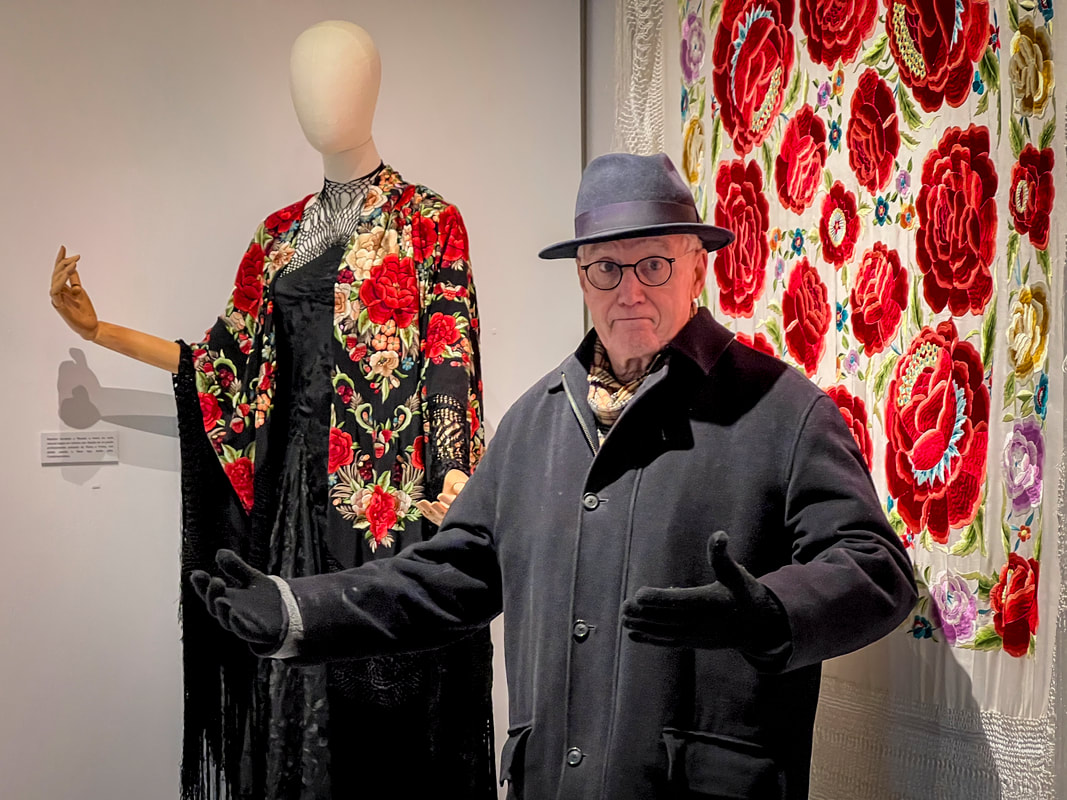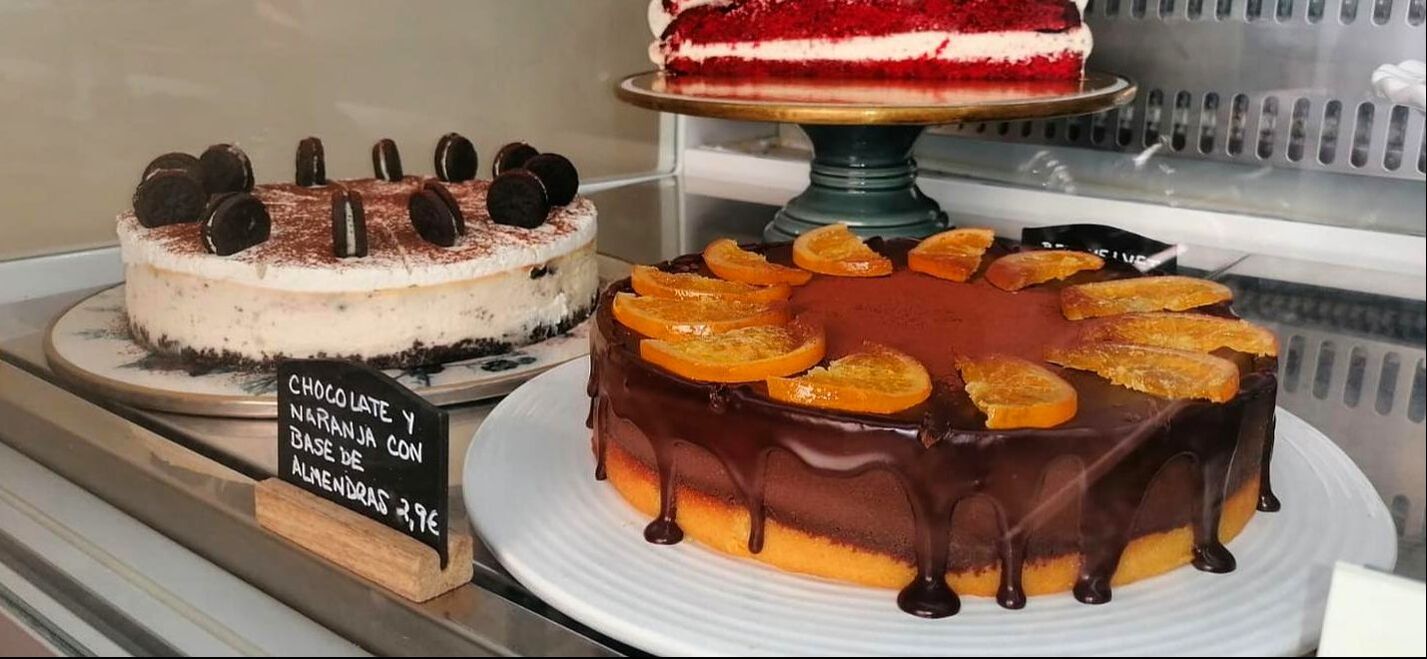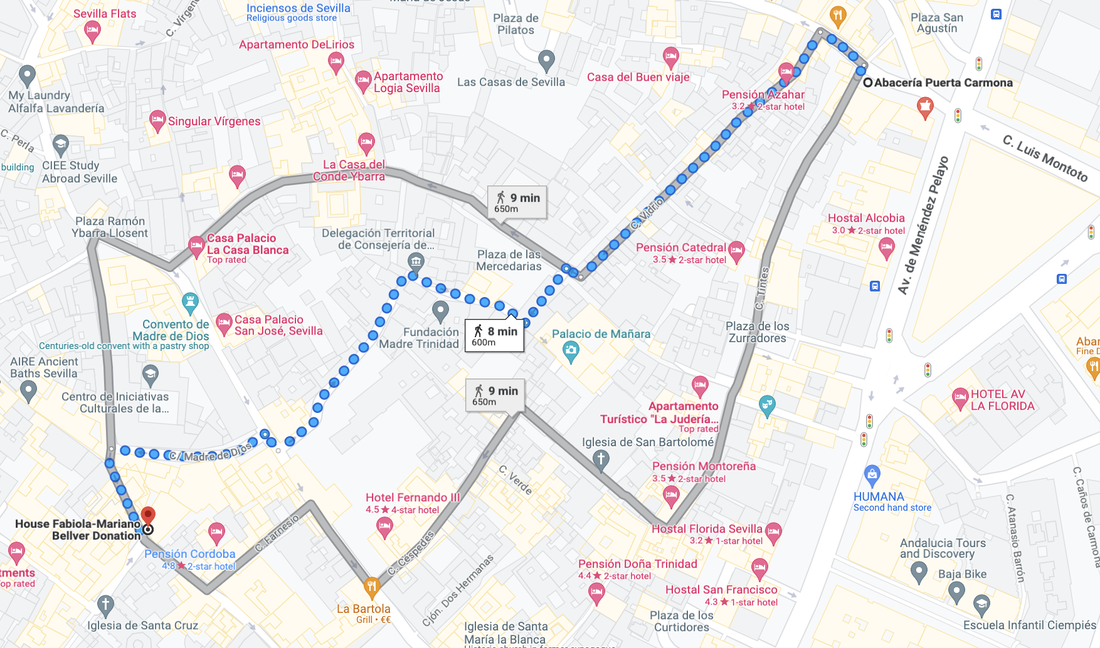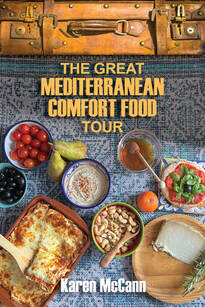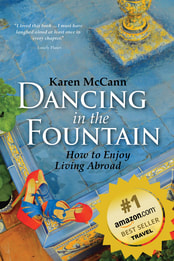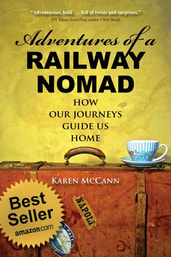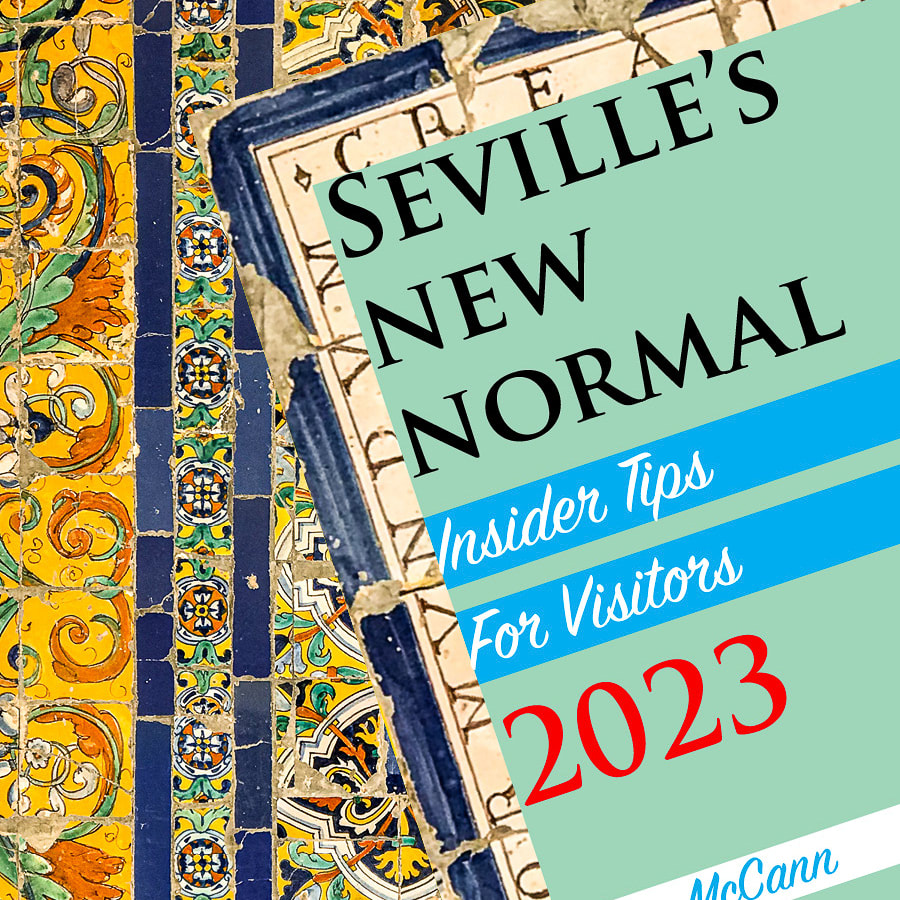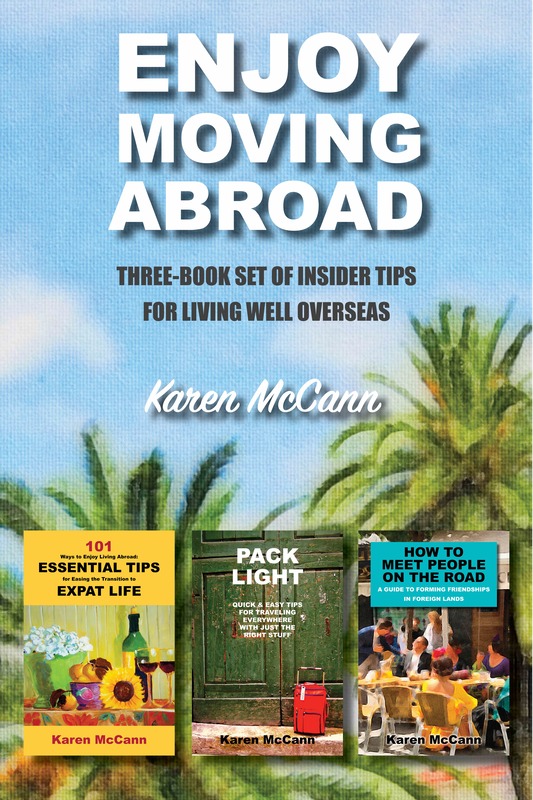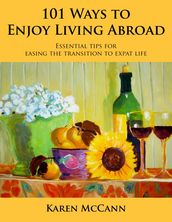|
“In ca5e I haven't mentioned, I am having to u5e the number 5 in place of the letter that come5 between R and T in the alphabet,” a friend emailed me this morning. “Alway5 something.... the letter i5 not working for some rea5on ... *but clearly sometimes it works..... Weird.” Yes, as you’ve probably noticed, computers are running amok in fresh, creative ways these days. I assume it’s our new AI overlords, warming up with a few frisky pranks before taking over the world. It’s the only way to account for my friend’s malfunctioning “S” key and for my epic battle this week with a nefarious online form. It all started with good news: the US Navy base at Rota, 78 miles south of Seville, had finally received a shipment of the newest Covid vaccine booster and would be happy to inoculate us. Just a quick update of my account with Tricare (military health insurance we have thanks to Rich’s Navy service) and then I could make an appointment. Easy-peasy, right? At once I ran into an impenetrable thicket of unfamiliar acronyms: MHS, DHA, DEERS, ADFM. I was assigned passwords, access codes, and PIN numbers. My personal and medical details were exhaustively examined. I had to formulate answers to a slew of security questions like where I’d gone to high school, my dog’s maiden name, and how I would set the ignition timing on a 1955 Bel Aire Chevrolet with a 327 cubic inch engine and a four barrel carburetor. And what did I get for my efforts? An Error Code 11 saying my form couldn’t be processed. Why not? A typo? A PIN pasted where the password should go? I kept trying. After four Error Code 11s, three Error Code 10s, and once, rather excitingly, an Error Code 5, I admitted defeat and called the help line operator. The operator made suggestions for half an hour before asking, “How are you inputting the information?” What did she think I was using, telekinesis? “Typing,” I said. “And pasting in the longer codes…” “You can’t do that. No pasting, no auto-fill. Keystrokes only.” I was flabbergasted. Why? No really, why? “Was there a reason,” I asked through gritted teeth, “this was never mentioned anywhere in the instructions?” I could almost hear her shrug coming down the line. So I re-entered every word and code by hand and finally got into the system. Only to learn I couldn't book an appointment because they were currently shifting to a new portal called Genesis. Until I’d had an appointment with Genesis, the bot explained, I couldn’t make an appointment with Genesis. “It’s Catch 22!” I exclaimed to Rich. “The military never disappoints. I guess we’ll just go down there and see what happens.” A few days later we rented a little Fiat and drove to the Navy base, where we were directed to Admin. To my delight, I walked into that administration office and saw something I never in a million years expected to find flying over a desk on a US military base: a rainbow flag. I’d have snapped a photo, but Rich explained taking pictures on a military base will get you arrested, possibly shot, so I refrained. But take it from me, the military isn’t what it used to be, and thank heavens for that. The young sailors in Admin sorted out our Genesis paperwork, and minutes later the medic was giving us our Covid shots. Whew! Now to enjoy part two of our outing: the small, beachfront town of Rota, a charming fishing village turned tourist mecca. I only hoped it wouldn’t be so overrun with holiday makers that we’d have trouble getting into one of the restaurants famed for seafood so fresh it winked at you on its way to the table. Leaving the Fiat in a vast seafront parking lot between a couple of large, drab cafeterias, we headed uphill for a recombobulation coffee. Settling at a café table across from the castle and the church, we listened to the gentle splash of a fountain and the desultory conversation of men taking their late-morning ease over glasses of sherry and beer. A balmy breeze carried the welcome news that, after weeks of near-freezing temperatures, the thermometer had suddenly shot up to 70 degrees. Rich and I lingered long over our coffee but eventually bestirred ourselves, knowing most places would close by 2:00 so everyone could to go home for lunch. Our first port of call was the 1571 Church of Santa Maria de la O, where we naturally expected to see “La O,” one of the ancient statues of a heavily pregnant Virgin Mary once popular in Spain. The name came from a ritual on her feast day, December 18, when “clerics in the choir after Vespers used to utter a loud and protracted ‘O,’ to express the longing of the universe for the coming of the Redeemer.” Nowadays images of a heavily pregnant Virgin are often considered unseemly, if not outright pagan. Her feast day has been expunged from the church calendar and most of her statues have been discreetly retired. Today, a conventional Our Lady of the Rosary presides over La O’s altar in Rota. Although disappointed La O was no longer in residence, we thoroughly enjoyed Rota's cozy atmosphere. We admired the castle (built in 1295, now the town hall), the sweeping white sand beach, quaint side streets, and roomy parks. By 1:30 everything was deserted. Clearly it was time to think seriously about lunch. I’d done my homework and earmarked various promising places, all listed as “open” online. When will I learn? I could almost hear Google chuckling as it sent us all over town in search of these glorious eateries, all closed. This was the off-season; nobody expected tourists or updated web listings. Only a few cafés remained open, and apologetic staff members explained they only had frozen, deep-fat fried fish balls and unheated, canned clams. A handful of tourists sat at the tables, drinking heavily, and who could blame them? Eventually Rich and I trudged back to the parking lot, where we’d noticed the two large cafeterias. One was the Fisherman’s Cooperative; surely they …? Nope. All frozen or canned stuff. With very, very low hopes we made our way to the Cantina Marinera. To our astonishment and joy, they were able to serve us fresh corvina (sea bass), hot, crisp, and perfectly cooked. We counted our blessings. And I am still counting my blessings. OK, this wasn’t the richest culinary experience in recent memory. There were head-banging frustrations. I’m more convinced than ever that robots are playing tricks on me. But I received the booster, which I believe ups my chances of survival. And I learned all over again that while cities like Seville have adopted international habits, there are still plenty of towns where people live by older rhythms. Winter is for slowing down. Warm mornings are for lingering in the sun. Midday is for family lunch. Every life offers us moments of comfort like these, if only we remember to embrace them. OUT TO LUNCH This story is part of my ongoing series "Out to Lunch." Mostly I write about visiting offbeat places in the city and province of Seville, often by train, seeking cultural curiosities and great eats. (Learn more.) This week I ventured a little further south to the province of Cádiz. WANT TO STAY IN THE LOOP? If you haven't already, take a moment to subscribe so you'll receive notices when I publish my weekly posts. Just send me an email and I'll take it from there. [email protected] LIKE TO READ BOOKS? Be sure to check out my best selling travel memoirs & guide books here. PLANNING A TRIP? Enter any destination or topic, such as packing light or road food, in the search box below. If I've written about it, you'll find it.
8 Comments
“The purpose of art,” said Picasso, “is washing the dust of daily life off our souls.” It doesn’t always have to be good art, either. Sometimes a work of art is so transcendently awful it electrifies our senses, whacks our funny bones, and gives our souls that brisk spring cleaning we didn’t even realize we needed. Take Lucy in the Field with Flowers. I know, right? Absolutely ghastly on every level. I apologize for inflicting it on your eyeballs, but I am illustrating a point here. Back in 1993, one trash collection day in a Boston suburb, antiques dealer Scott Wilson spotted Lucy among curbside bins and picked her up, thinking he could sell the frame if he discarded the painting. “You can’t do that!” objected his pal Jerry Reilly. “That’s so bad, it’s good.” Reilly took the painting home and with a small group of friends began collecting other "disasterpieces." Eventually they threw a party jokingly called “The Opening of the Museum of Bad Art.” And the rest, as they say, is art history. Today the Museum of Bad Art owns 1000 works, each worse than the last, with a few dozen of the most dreadful on display in its current location, the Dorchester Brewing Company just outside of Boston. Occasionally road shows and international exhibitions are organized, but sadly, so far the collection hasn't made it to Seville. I keep hoping. How well has MOBA managed to preserve the low standards set by Lucy? You be the judge. Brace yourself. You might want to remove your eyeglasses and take a step back. OK, ready? Here goes. Don’t say I didn’t warn you. Little is known about most pieces, so titles and backstories are largely imaginary. Sunday on the Pot with George was a take-off on Sunday in the Park with George, a musical about Georges Seurat's painting A Sunday Afternoon on the Island of La Grande Jatte. The description suggests the subject is sitting on a chamber pot, inspiring one visitor to write in the comment book: "Someone had slipped into the bathroom as I took in this painting and began peeing loudly into a toilet. The reverberating sound of urine splashing while viewing George brought the painting to life, and when the denouement of the flush sounded, I wept." You don’t get that kind of experience at the Louvre or the Met! Truly terrible art may make us wince, but just as with more respected works, it can fire our imaginations and stir up emotions. Who can resist the come-hither look of Ferret in a Brothel? Research shows that looking at powerful art — good, bad, or perplexing — stimulates our brains and makes them more supple. “When you observe a profound piece of art you are potentially firing the same neurons as the artist did when they created it,” says art activist Jacob Devaney, “thus making new neural pathways and stimulating a state of inspiration.” This is why I love going to downtown Seville’s Pan y Circo (Bread and Circus), a three-story art installation which also happens to be an outstanding restaurant. It’s the brainchild of artist Cristina Galeote, whose big, bold, wonderful paintings dazzle the eye throughout the space and play off other artists’ work, vintage memorabilia, and kooky knickknacks. The visual stimulation is so strong that while I’m there I find my conversations growing livelier and my brain buzzing with ideas for new projects. I know what you’re thinking: “Sure, stimulating our brains is great, but what about our tastebuds? Our stomachs? Our post-prandial haze of goodwill?” I am pleased to report the eclectic fare is as much fun as the circus atmosphere. Although we’d dined there many times, Rich and I felt we owed it to my readers to evaluate the food in an official capacity, so we lunched there last Thursday. To awaken our palates and place our interiors on high alert, the restaurant provided a complimentary dish of creamy hummus accompanied by homemade bread. Next came vegetable gyozas, the Chinese potstickers that have become the darling of Andalucía foodies. Legend has it jiaozi (餃子) were invented 2000 years ago to be placed over frostbitten ears, but some naysayers doubt the medical efficacy of this treatment. We concluded the meal with a Moroccan pastilla, a delightful pie combining savory and sweet flavors in a delicate, flaky crust dusted with cinnamon. Created here in Andalucía a millennia ago, it was originally pigeon pie, but now, in a nod to modern sensibilities, it’s made with chicken. “Or at least, that’s what they tell you,” Spanish friends say with a wink. As usual, I took time between courses to roam from floor to floor, checking out the latest acquisitions to see if I wanted to take anything home. Absolutely everything in the restaurant is for sale, from $10 plates to Galeote’s major works costing upwards of $8,500. So far I’ve never acquired anything there except good food and inspiration for my own artistic endeavors. A year ago, Rich and I dined in front of one of Galeote’s major works. The large scale felt exhilarating, and this winter I finally found the time, a smaller but still sizable canvas (40 x 40”), and an inspiring subject: the coziness of snuggling into a warm bed with a good book on a cold night. This weekend I finished painting Winter Dreams, and Rich and I celebrated with a long Sunday lunch in my studio. OK, it's not the Mona Lisa, but at least it’s not the Mana Lisa; I feel there’s a fairly good chance Winter Dreams won’t end its days on MOBA's walls. Although from what I read, plenty of artists actually donate their work to the museum, no doubt for the fun of bringing all their friends around to make snarky remarks. Contributions pour in from across the globe and from the local Trash Collectors Union as well. On slow news days the press runs stories about MOBA, and nurse Susan Lawlor was idly perusing one when she saw a picture so unexpected she “snorted Coca-Cola from her nose in astonishment.” It was a portrait of her grandmother, Anna Lally Keane (1890 - 1968), now known in bad art circles as Lucy in a Field with Flowers. Lawlor’s mother commissioned the painting and gave it to her sister who, while dubious about its artistic merits, displayed it for years because hey, it was their mom. Here it is again, in case your subconscious has already repressed all memory of Lucy. "The face is hauntingly hers, but everything else is so horribly wrong,” says Lawlor. “It looks like she only has one breast. I'm not sure what happened to her arms and legs, and I don't know where all the flowers and yellow sky came from." And yet … more than half a century later, we’re still talking about this painting. It makes us feel something — if only a powerful urge to hurl it out the window. And that’s art fulfilling its purpose: springing up where we least expect it, startling a laugh out of us, sharpening our senses, and shaking the dust off our souls so we can see the world around us a little more clearly, as if we were looking at it for the first time. Or as designer Anni Albers put it, "Art is something that makes you breathe with a different kind of happiness." OUT TO LUNCH This story is part of my ongoing series "Out to Lunch" about visiting offbeat places in the city and province of Seville, often by train, seeking cultural curiosities and great eats. (Learn more.) WANT TO STAY IN THE LOOP? If you haven't already, take a moment to subscribe so you'll receive notices when I publish my weekly posts. Just send me an email and I'll take it from there. [email protected] LIKE TO READ BOOKS? Be sure to check out my best selling travel memoirs & guide books here. PLANNING A TRIP? Enter any destination or topic, such as packing light or road food, in the search box below. If I've written about it, you'll find it. “That can’t be right,” I said, staring at the bodega’s menu. “Lagartito — doesn’t that mean ‘lizard?’” Rich already had his phone out. “According to my translation app, it’s ‘little lizard.’” So … tender young reptile? I flagged down the harried woman dashing among the tables and asked for details. “It’s meat,” she replied. And was gone before I could pin down any particular species. “Hmmm,” I mused. “What wine goes with lizard? I’m thinking white. To me, red pairs best with a mammal-based meal.” “I’m sticking with beer,” he said. We’d already obtained small, ice-cold starter cervezas to slake the worst of our post-sightseeing thirst. For medicinal purposes, of course. My long-time readers will recall that ten years ago I published one of my most popular posts ever: “Hot News! Beer Rehydrates Better Than Water!” After perspiration-inducing athletics, we need to replenish not just moisture but electrolytes and calories, which are found in beer but not water. This groundbreaking humanitarian research was (naturally) conducted on a college campus here in Spain. The bottom line: beer is good for you. It’s science! However, on this occasion Rich and I should probably have opted to rehydrate with H2O, as we were in Alcalá de Guadaíra, a town famous for its water. In fact, the town’s gushing springs and robust river supplied the city of Seville for 2000 years via a Roman aqueduct. This marvel of engineering carried clean drinking water ten miles from Alcalá to a vast cistern in Seville for distribution throughout the city. It never stopped until 1912, when, in the giddy rush of progress, everyone decided they didn’t need that old thing anymore and tore it down. Jesus wept. Despite occasional outbursts of progress, there remains plenty worth seeing in Alcalá de Guadaíra, and Rich and I decided to visit so we could tour the town and enjoy a nice Sunday lunch. Normally we do our “Out to Lunch” excursions midweek, when everything is open and less crowded, but I was inspired by Peter Mayle, who wrote about his experiences in Provence: “Sunday lunch, at any time of year, is my favorite meal. The morning is undisturbed by work, the afternoon siesta free of guilt. I feel that restaurants have a more than usually good-humored air about them, almost an undercurrent of festivity. And I’m sure that chefs try harder, knowing their clients have come to enjoy the cooking rather than to discuss business. There’s no doubt about it. Food tastes better on Sunday.” Would that, I wondered, hold true for the lagartito al PX (in Pedro Ximénez sherry sauce) I’d just ordered? But before arriving at the lunch table, Rich and I had much ground to cover — starting, of course, with a second breakfast. We arrived from Seville by bus at midmorning and immediately popped into the nearest café, where I was eager to try the town’s other claim to fame: great bread. Nicknamed Alcalá de los Panaderos (Bakers), the town rejoices in abundant wheat fields, hydraulic power, and such unusual breads as teleras, medias bobas, and albardas. “Alcala’s bread comes in various shapes and sizes, many of which are not found outside of Alcalá,” wrote blogger Mexican Cassie. “When I asked about this I was told that it’s really all about the texture rather than differing tastes.” Let me tell you, it’s about the taste, too. Flavor and texture both surpassed what I’m used to in Seville’s traditional bakeries. According to Spanish friends, 700 years ago most of Seville’s bakers were Moors who were persecuted along with the Jews during the dark years of the Inquisition. When all the professional bakers were gone, no one wanted to step into their shoes, so quality lapsed. How Alcalá de los Panaderos escaped that fate I don’t know, but they've been baking great bread for countless generations. Just blocks from the café we found the town museum filled with romantic landscape paintings, a few lovely Roman artifacts, and a handful of fossils. The star exhibit: a couple of six-million-year-old teeth from the now-extinct giant mackerel shark megaselachus megalodon, which fans of direct-to-video action movies may remember from such epics as Shark Attack 3: Megalodon, and The Meg. And then began the ascent to the castle, which as usual was located in the highest, most inaccessible part of the landscape. For nearly 4500 years humans have looked at that outcropping and said, “Yep, easiest place to defend. We’re building there.” Twelfth-century Berber Muslims put up a fortress, but the vast castle you see today began taking shape after Ferdinand III claimed the region for Christian Spain in 1248. A new line of defense was added in 2007: the colorful, Gaudí-style Dragon Bridge. Beside the castle stands Santa María del Águila, the church of Saint Mary of the Eagle. They say after Ferdinand III retook the town, an eagle kept flying over the castle walls then landing in a small cave. There folks discovered an ancient statue of the Blessed Virgin, hidden during 500 years of Muslim rule. The simple figure, gussied up with crown, fancy robes, and an eagle at her feet, was declared the city’s official protector and permanent mayoress; they began carrying her through the streets during wars and plagues to comfort her many devotees. Four centuries later, documents came to light in which Ferdinand III says of the statue, “Call it the Eagle,” explaining his second wife was a big fan of St. John the Evangelist, whose symbol is the eagle, and he knew this would please her. It was all the king's hoax! Shocking, I know. Because otherwise the story is so believable. The statue I saw wasn’t even the original. The nun at the gift shop explained that during the Civil War the church had been attacked by Republicans, who burned the statue and much else. A replica was immediately commissioned and presides over the altar today. After hiking all over town, Rich and I were more than ready to sit down to the kind of leisurely gourmet lunch Peter Mayle described so lovingly. Having armed ourselves with a list of possibles, we trudged around to half a dozen restaurants, only to learn they were all completo (fully booked). Would we be reduced to eating in one of the pizza and hamburger joints we’d passed? As you can imagine, when I spotted the modest, family-run, old-school Bodeguita Sanlucar, I was overjoyed. In the end, I learned my lagartito wasn't really lizard but pork extracted from between the pigs’ ribs and loin; apparently the long, skinny strips remind people of sinuous reptiles. I’m lucky it wasn’t the real deal. Lizards tend to be bony and bland, where my lagartito was succulent and delicious. And the sweet, slightly tangy Pedro Ximénez sauce was so yummy I sopped up every last drop with the fine local bread. I reflected this meal might not fit the definition of five-star haute cuisine beloved by serious travel writers, but it certainly ranked as the best damn lizard I ever tasted. Thanks for the memories, Alcalá! WANT TO KNOW MORE ABOUT THE BEER STUDY? Of course you do. Here's the link: “Hot News! Beer Rehydrates Better Than Water!” READY TO TRY MAKING LAGARTITO AT HOME? Surprise your family! Lagartito with Pedro Ximínez Sauce Recipe OUT TO LUNCH This story is part of my ongoing series "Out to Lunch" about visiting offbeat places in the city and province of Seville, often by train, seeking cultural curiosities and great eats. (Learn more.) WANT TO STAY IN THE LOOP? If you haven't already, take a moment to subscribe so you'll receive notices when I publish my weekly posts. Just send me an email and I'll take it from there. [email protected] LIKE TO READ BOOKS? Be sure to check out my best selling travel memoirs & guide books here. PLANNING A TRIP? Enter any destination or topic, such as packing light or road food, in the search box below. If I've written about it, you'll find it A few days ago, I found myself gazing nostalgically at a painting of two brawling women. “Remember that night …?” I said to Rich. He was already nodding. Many years ago, we were standing in a tiny Seville bar when a fight broke out between two neighborhood matrons. The free and frank exchange of views grew increasingly personal and physical, escalating to shouts and shoves. It never quite reached the hair-pulling stage, but eventually one woman stumbled out the door, flushed and disheveled, while the victor swaggered back triumphantly to finish her beer. It was the first time I’d ever seen an actual bar fight in real life. I know, you’re right, I have got to get out more. The painting that prompted this trip into memory's barroom hung in an unfamiliar museum I'd stumbled upon while taking a short cut through back streets near the cathedral. I'd have missed it altogether except for the giant poster by the door that said, “Seville, the last romantic city?” “Seriously?” I said. “Yes, this city is romantic. But what about Paris? Italy? Zagreb, where we danced summer nights away beneath the stars?” I peered more closely at the building. “What is this place?” I soon discovered it was a museum saddled with the unfortunate, designed-by-committee name of Mariano Bellver and Dolores Mejías Romantic and Traditionalist Collection at Fabiola House. (For short, it’s the Bellver Museum or Casa Fabiola or some configuration involving the words Bellver Collection and Casa Fabiola. You see why it pays to hire professional copywriters in these situations.) Grandson of a famous sculptor whose works include the cathedral’s 1885 Assumption portal, Bellver spent a lifetime collecting art which he gifted to the city in 2016. Two years later the museum opened, only to shut down in 2022 following a construction disaster. It seems the next-door neighbor had commissioned renovations involving the overenthusiastic application of a pneumatic drill, which cracked the common walls and sent priceless art tumbling to the floor. Rich and I decided to go in and see what was left of the collection. I was instantly charmed by the fourteenth-century palace, renovated many times by various owners, and by the warmhearted paintings of daily life in nineteenth-century Seville. Many of the subjects looked impossibly quaint — a dispute at knifepoint over a card game, carriages in front of city gates long since demolished to smooth the flow of automobile traffic, the Feria de Abril (April Fair) in the days before it was attended by five million people a year, generating annual revenues of $1 billion. But in this deeply traditional city, many elements — such as Feria outfits — were instantly recognizable and nearly identical to the way we dress for the occasion now. The nostalgic mood inspired by these paintings prompted us to head over to the place Rich and I always call “The First Bar.” More than two decades ago, newly arrived for our first extended stay in Seville, we’d wandered out of our rental apartment and fetched up in this modest, traditional tapas bar. I remember standing at the counter’s glass case to see what was on offer, as I didn’t yet have the vocabulary to read a menu. Being vegetarian at the time, I pointed to boquerones en vinagre (anchovies in vinegar) and espinacas con garbanzos (spinach with chickpeas). The very air seemed to sparkle with the sizzling excitement of being there at last. I still feel that way about this city. Of course, it’s changed enormously over the decades. Word of its charm has gotten out and the streets are thronged with tourists nearly all year round. Crumbling old buildings have been renovated and converted to smart new hotels or Airbnbs. Monuments such as the Alcázar palace and the cathedral, where I once could wander in and out freely, now require advance reservations, and hours-long lines are the norm. Happily, the quality of the food has improved tremendously just about everywhere, including The First Bar. Having sustained many changes in ownership, The First Bar is currently called the Abacería Puerta Carmona, meaning the butcher shop of the long-gone city gate that once gave access to the road leading to Carmona. The abacería is painted in brighter colors now, and the menu is more extensive but still sticks to the classics. We ordered tomate con melva, thinly sliced tomato topped with mackerel, and a truly outstanding solomillo al whisky, pork sirloin with a garlicky whisky-soaked sauce. This whisky sauce burst on Andalucía’s culinary scene in the 1970s, supposedly a desperation substitute when a cook ran out of wine. But that seems unlikely; I’ve never seen a Sevillano run short of wine on any occasion. As we sat in The First Bar enjoying our solomillo al whisky, Rich and I talked about all the changes we’d seen here over the years. To us, Seville is still the most romantic city we know, and it’s hard not to mourn all the good bits that are slipping away. But change is necessary and healthy; it keeps historic cities from becoming fossilized into theme parks. And if the expat life teaches us anything, it’s how to deal with loss. We miss so many people back home, and expats friends here have a dismaying tendency to depart unexpectedly for old haunts or new adventures. It’s the price we pay for a vivid life. Is it worth it? Oh, yes, I think so. I recently ran across this lovely quote from author Brianna Wiest, summing up the cost and value of change. Whether our transitions come from geography, age, jobs, relationships, or other circumstances, her words apply to all of us, sooner or later. “Your new life is going to cost you your old one. It’s going to cost you your comfort zone and your sense of direction. It’s going to cost you relationships and friends. It’s going to cost you being liked and understood. It doesn’t matter. The people who are meant for you are going to meet you on the other side. You’re going to build a new comfort zone around the things that actually move you forward. Instead of being liked, you’re going to be loved. Instead of being understood, you’re going to be seen. All you’re going to lose is what was built for a person you no longer are.” Is Seville the world’s last romantic city? No; there are certainly many others out there. Seville’s gift is bringing its own special vibrancy to the time we spend with people we love and, if we’re lucky, enabling us to rub shoulders with Sevillanos who know how to enjoy the small pleasures of daily life. During my year-end break, I was considering how I could best help visitors embrace the city's culture, and as is so often the case, my thoughts turned to food. I decided to start compiling my own personal guide to the city’s most endearing eateries. If you’re visiting Seville this year, or just love drooling over pictures and descriptions of great meals, check it out. Cozy Places to Eat in Seville
|
This blog is a promotion-free zone.
As my regular readers know, I never get free or discounted goods or services for mentioning anything on this blog (or anywhere else). I only write about things I find interesting and/or useful. I'm an American travel writer living in California and Seville, Spain. I travel the world seeking eccentric people, quirky places, and outrageously delicious food so I can have the fun of writing about them here.
My current project is OUT TO LUNCH IN SAN FRANCISCO. Don't miss out! SIGN UP HERE to be notified when I publish new posts. Planning a trip?
Use the search box below to find out about other places I've written about. Winner of the 2023 Firebird Book Award for Travel
#1 Amazon Bestseller in Tourist Destinations, Travel Tips, Gastronomy Essays, and Senior Travel
BLOG ARCHIVES
July 2024
CATEGORIES
All
|
